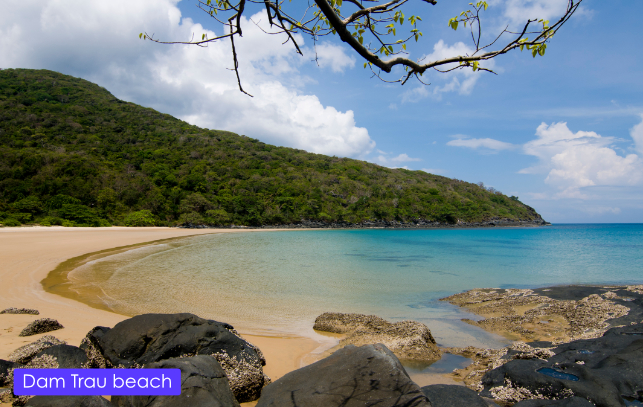Vietnam
possesses an exquisite coast line full of dramatic shape and colour and
includes some very fine stretches of sand. Because of Vietnam’s complex weather
patterns, the best time to visit varies geographically.
Although there
are a few very isolated and beautiful small beaches in the north of Vietnam, there
are few with accommodation possibilities and most of the country’s resorts are
to be found along the central coast.
However, if
you like small uninhabited far flung beaches, the combined oceanic formations of Ha
Long, Lan Ha and Bai Tu Long Bays, hide countless little gems.

For islands
which afford something in the way of facilities, the best regarded of which
include Quan Lan, Ba Trai Dao, and Ti Top, the latter of which has a splendid
viewpoint worthy of the strenuous climb. There are also some resort style
facilities at Tuan Chau and Bai Chay, though both have artificial beaches.
For
accommodation, the popular choice is Cat Ba Island, not least because in
addition to its beaches, it also houses a National Park, home to the famous Cat
Ba Langurs. Offshore from Cat Ba, Monkey Island is a more laid back
accommodation alternative to Cat Ba town.

Away from the rugged
and cooler north it is the central coast that truly plays host to beach lovers,
with wonderful stretches of sand unfolding almost endlessly southward from the
moment you travel over the High Van Pass near Da Nang.

Along Da Nang’s
coastal strip you can find the 20 mile long stretch of 'China' (My Khe) Beach near Da Nang
is regarded as one of Vietnam’s finest and historically the landing and recreational
site of American troops in less enlightened and benign times. Other beaches in
the vicinity are Nam O, Non Nuoc and Lang Co beaches.
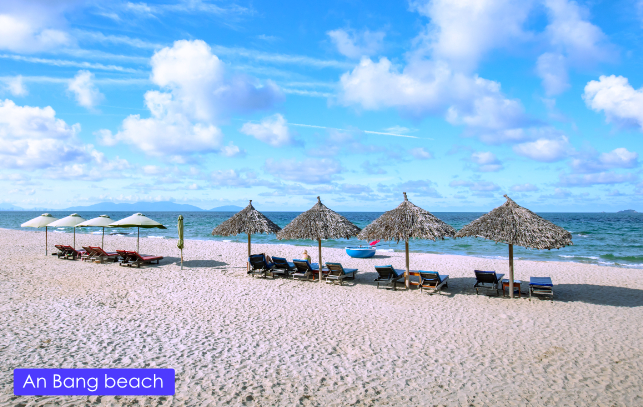
Travelling
southward, graceful Hoi An is best known for its quant historical features and
its wonderful lantern festival, and is a great choice for cultured travellers,
offering all the myriad benefits this delightful virtually traffic-free
historic coastal town has to offer combined with all the nearby beachfront
facilities you could wish for at nearby Cua Dai, An Bang and Ha My beaches.
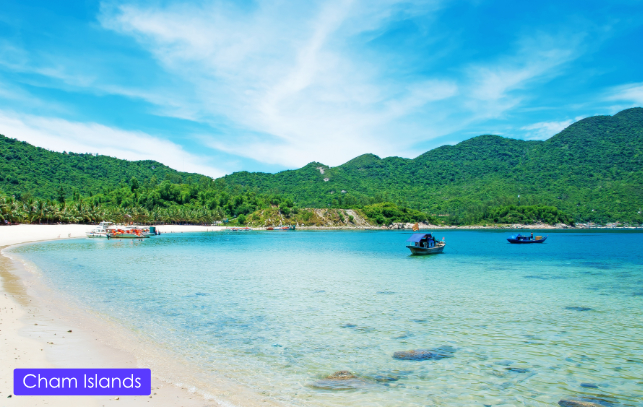
Offshore from Hoi An, the Cham islands provide less busy, relaxed beachfront visions to
enjoy, with seven beaches gracing it largest island, Cu Lao Cham, the most
popular of which are Bai Cong, Bai Ong, Bai Bac and Bai Xep beaches. A little
way further south the little visited Ly Son and An Binh Islands may suit those
who like to avoid the main tourist areas and get a sense of authentic
Vietnamese island life, though as with many beaches where there is a lack of
infrastructure, waterborne rubbish can sometimes be an
issue.

Back on the
mainland, the area of Quy Nhon, equidistant between Hoi An and Nha Trang, has
numerous stretches of beach, both developed and untouched. The town’s beaches
are beautiful, but the northern beach is also host to the fishing fleet, which
can occasionally mar the quality of the water.

Across the
bay, on the Phuong Mai peninsula Ky Co beach is the best of several beaches
found here, while to the south of Quy Nhon town, numerous ribbons and
crescents grace the coast down to Tuy Hoa, where Bai Xep is a very popular
choice, especially among younger visitors.
Quy Nhon’s
largely untouristed but delightful coastline and litter of islands is
undoubtedly ripe for future development and will become a tourist hotspot of
the future.
Often referred
to as the Vietnamese Riviera, Nha Trang is home to a 6km beach and is a much
busier prospect for those who enjoy beachside bustle and lively nightlife.

In addition to
the city’s beach, there are a number of alternative possibilities on the nearby
islands, such as Bai Tru beach of Hon Tre, or Hon Tam beach on the neighbouring
island of the same name. At the norther rim of Nha Trang bay is the beautiful
but exclusive Ninh Van Bay, but you’ll need to stay in one of its luxury
resorts to enjoy it.

On the
mainland to the south of Nha Trang are Nhu Tien beach and, beyond, a lovely
collection of beaches of the Cam
Ranh and Binh Lap peninsulas and islands, with Cam Ranh’s Bai Dai beach a
popular choice. The best time to visit the Nha Trang area is between January
and September.
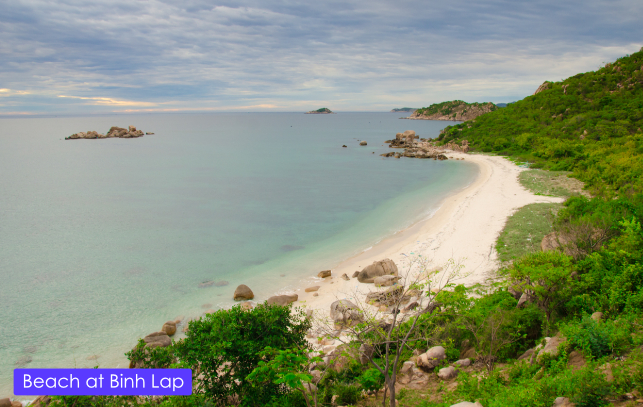
Because of its
benign climate, the best choice for all year round dry weather is Mui Ne, near
Phan Thiet, far to the south of the Cam Ranh area, famous internationally as a
windsurfing hotspot. Distractions from the beach include the Sea Links Golf
Course, but there is little else nearby in the form of historical or cultural
sightseeing, and the resort is best suited to those who prefer quietude.

The beaches on the island of Phu Quoc are a great getaway from mainland
Vietnam, and unlike the South China Sea resorts in the rest of Vietnam, sits
just within the Gulf of Thailand. And offer a fairly relaxed environment with
good walks and diving.
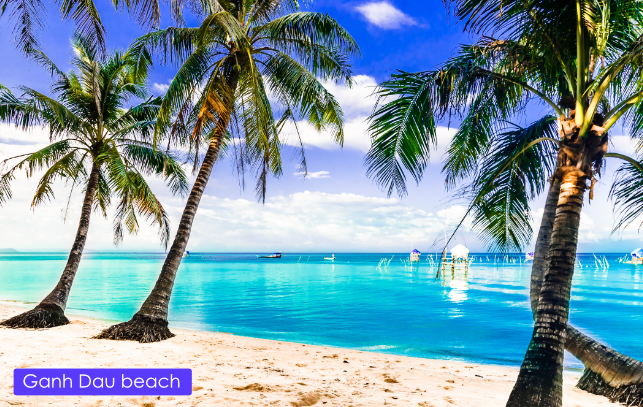
Among Phu Quoc’s
numerous beaches, Long Beach, Ong Lang, Bai Sao and Ganh Dau are popular
choices for beaches, but there are many others to explore.
Phu Quoc is best visited
between November and June, with the driest time between November and March.
Con Dao
archipelago is host many beach escapes, among which Dam Trau, Lo Voi, and An Hai
are the best, while windswept Nhat beach offers a rugged but beautiful
wildness.
